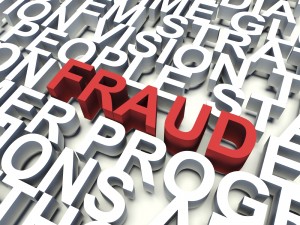Reverend Bobby thought it a bit strange when his wife, with her hand cupped over the phone, said that Sargent Willis was on the line and had some questions. Sargent Willis wasn’t a member of his congregation and the last time he could remember he had  never had any cause for the police to want to ask him questions. He thought, “Did I run a red light and a traffic cam catch me,” he wondered.
never had any cause for the police to want to ask him questions. He thought, “Did I run a red light and a traffic cam catch me,” he wondered.
The Shock Of A Collapsing Illusion
We hear a lot these days about identity theft, Internet fraud, email scams or Wall-Street defalcations, but the truth is most organizations are more vulnerable to fraud than they might think. Whether it is a church, a non-profit or a small business that you’ve put blood, sweat and tears into, the chance that you’re at risk for fraud is substantial.
The conversation between Reverend Bobby and Sargent Willis led to arrest and conviction of what Reverend Bobby once described as a pillar of sainthood in their small but growing church. Sue was a Christian’s Christian. The backbone of the church, Sue gave of her time, taught Sunday school and was the treasurer for years.
Sadly, regardless of the type of organization, most frauds take place from within the company’s own ranks, and more times than not, by trusted individuals that we would never suspect.
By their nature, small businesses, non-profits or associations are typically run on a shoestring budget, which makes staffing tight and internal controls limited. And while most people are trustworthy, external factors can create a need that, combined with opportunity and a dose of rationalization, create the potential for unethical and fraudulent activity.
When the perfect storm of fraud hits and the illusion fades into reality it becomes clear the devastation that fraudulent activity creates. Every choice has a consequence and the consequences of fraud are significant and far-reaching.
What To Look For
Let’s use the example of Sue above to frame the discussion about how good people make very bad choices, which leads to fraud.
According to the Association of Certified Fraud Examiners the following are red flags for fraudulent behavior:
- Most frauds are committed by people who have worked in the organization for a number of years. People who have ten years or more of experience with the organization cause higher fraud losses. Why? The answer is simple: the longer a person is employed within a company, the greater the trust and responsibility. Likewise, trusted employees are not often considered likely candidates for fraud.
- Individuals in one of six departments commit the vast majority of all frauds: accounting, operations, sales, executive/upper management, customer service and purchasing. If fraud occurs in your business, it is likely by someone who has opportunity; individuals in these six areas have the greatest opportunity to violate trust.
- Fraudsters displayed one or more of these red flags before or during the commission of the fraud: living beyond means, financial difficulties unusually close association with vendors or customers , and excessive control issues . Any of these behaviors could be a sign of impending danger.
In looking back on the situation, Reverend Bobby could have seen disaster coming. Sue was a trusted member of the church holding her position for more years than Reverend Bobby had been there. Not that longevity is a bad thing, but church leadership could have required a change of roles from time to time disrupting the natural flow of funds. Typically when things change inappropriate behavior comes to light.
But, beyond Sue’s tenure, she was quite protective over the money and monetary processes for the church. Excessive control is a significant sign that something might be amiss. When people are unwilling to let go of their control, take a vacation or insist that only they can do the task, leadership should step back and examine the role and function more carefully.
Finally, in Sue’s case, there never seemed to be enough. Sue received calls often from creditors. Consistently she would either quickly hang up, showing her dissatisfaction with the call received, or take the call on her cell phone, out of ear shot, and return to work irritated at the interruption.
Final Outcome
In the end, Sue embezzled over $200,000 from the church where she was trusted. The discovery was both a shock and disappointment to Reverend Bobby and the entire congregation. Every choice has a consequence. Sue’s choices – made over time – created significant consequences for both she and those close to her. Today she is serving a prison sentence that will leave a permanent scar on her and those close to her.
Bobby shared that he now understands the importance of his role in this whole troubling problem. As management, Bobby has a responsibility to understand the three components of unethical behavior and often-illegal behavior: need, opportunity and rationalization. Most importantly, Bobby knows that with some minor changes Sue might have, although tempted, been prevented from making those dangerous choices, which led to an outcome that no one wanted.
As a manager of your organization, what steps are you taking to protect your most valuable assets – your employees – from making dangerous decision that impact them and your organization?
About the Author
Chuck Gallagher is the President of the Ethics Resource Group and an international expert in business ethics. Chuck provides training, presentations and consultation with associations and companies on ethics and creating ethical cultures where people do the right thing, not because they have to, but because they want to! Information can be found at https://www.chuckgallagher.com or Chuck can be reached via email at chuck@gallagher.pcgdev.com or by phone at 828.244.1400.


